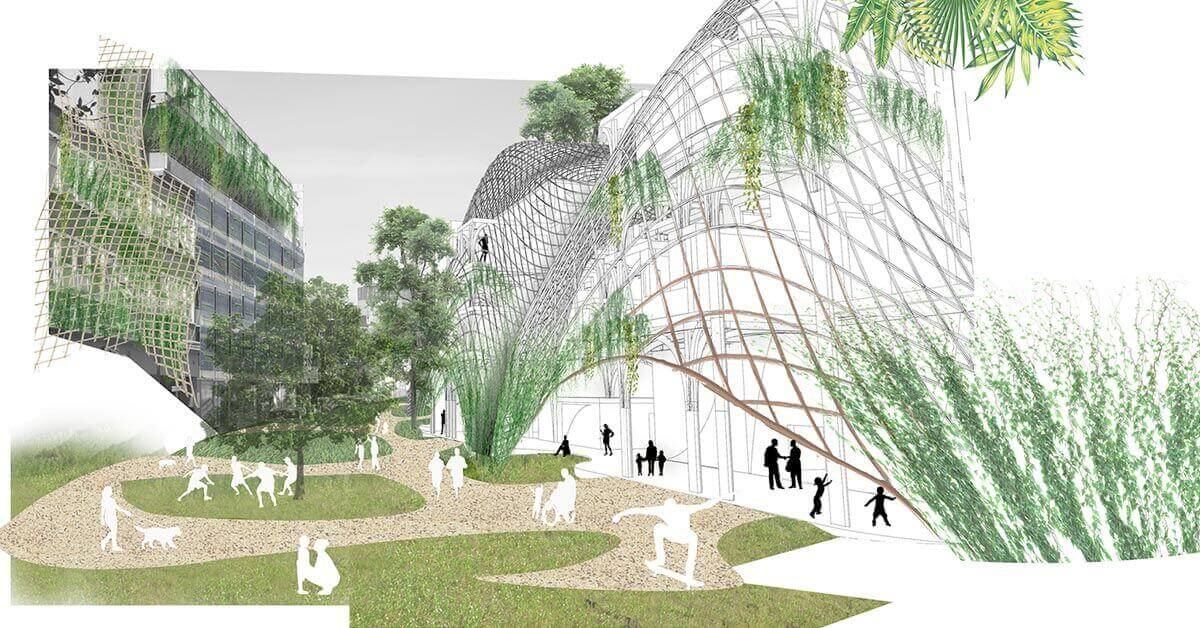
Find out why landscape architecture isn't just about designing gardens and parks.
What is landscape architecture?
Landscape architecture refers to the planning, design, and management of both constructed and natural surroundings. Landscape architects seek to improve both the natural environment and the health and wellness of humans through their designs.
Some kinds of landscape architecture are easy to see, like parks, campuses and gardens. Other kinds look completely natural, such as a waterway or a forest. Projects can range from very small to very expansive, but at the core, landscape architecture is about creating spaces that have a positive impact on society, culture and the environment.
In today’s world, it’s important that these qualities are enforced in a sustainable fashion – that is to use less resources, produce less waste, support recycling when possible and use policies that look to long-term results.
Be it urban or rural landscapes there’s much to consider when creating new projects – including the natural and social processes, the infrastructures, the cultural and creative contexts and the impact of the landscape on the people living around it.
Landscape architects combine creativity and imagination with an array of information pertaining to hydrology, geology, horticulture, design technology and more to create designs that are beneficial to both humans and the environment.
Why is it important?
Today, more than ever, people are taking note of the impact of human involvement on the environment. The more fast paced our lives become, the taller our buildings scale, the more crowded our cities get – the bigger our impact on the planet and its resources.
It’s important to have a healthy relationship between people and the environment. You’ve seen vertical gardens, wall gardens, roof gardens, and pocket parks – all different ways to bring in a little bit of greenery into the concrete jungle we live in and all examples of landscape architecture. By providing creative solutions for environmental problems, whilst protecting and preserving natural landscapes, we can create healthier and cleaner spaces that offer a therapeutic respite from our busy daily lives.
But landscape architecture isn’t just about creating gardens and parks, it’s also about designing projects that help neutralise the toxicity of the surrounding environment, create cooling effects, or improve ecology and diversity. It’s about enhancing communities by creating safe, healthy places and inclusively accessible resources, such as public transportation, parks, and sources of fresh food.
Why study at Arts University Bournemouth Online?
Arts University Bournemouth Online offers a part-time, Master of Arts in Landscape Architecture Studies. This flexible course can be accessed from anywhere in the world and runs for two years, meaning you can juggle the course and your career.
Learn from experts in the field and study alongside their peers to help create a collaborative and fulfilling network. The course takes into consideration both theory and practice and offers a deep dive into interfaces between people, cities, nature and landscapes.
You will learn about this field through a design project and nine modules:
- Where I Stand: Landscape and Resilience
- What is Landscape: Analysis, Evaluation and Representation
- Landscape and Culture: History, Philosophy and Society
- The Big Picture: Landscape as Infrastructure and Ecosystem
- Resilient Placemaking: Landscapes for Economic, Social and Environmental Wellbeing
- Landscape and Equity: Participatory Design and Social Placemaking for Human and Planetary Justice
- Gardens and the Polite Landscape Tradition
- Urban Design: A Language Primer
- Landscape Research Methods and Strategies
With start dates in January, May and September, you can join when it’s most convenient for you.
If you’re interested in creating beautiful spaces that boost overall human and environmental health, look no further. Check out AUB Online’s part-time MA Landscape Architecture Studies.
Featured image credit: Charlotte Harvey | BA (Hons) Architecture (Part 1 ARB/RIBA)
Related posts
The difference between architecture and landscape architecture
Discover the key differences between architecture and landscape architecture, as well as the...
Read the storyWhat’s green & blue infrastructure planning?
Discover the power of green and blue infrastructure planning to create sustainable, resilient, and...
Read the storyWhat is urban design?
Uncover the importance of urban design and its transformative power in creating vibrant,...
Read the storyStart your creative journey here.
Want to chat or ask a few questions? Fill this in and we’ll give you a call back.
